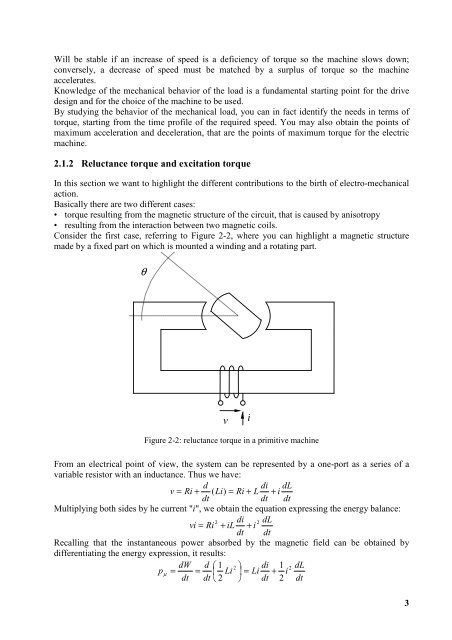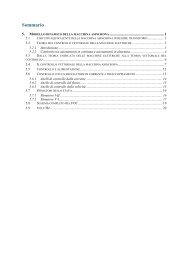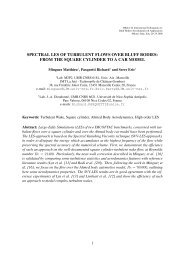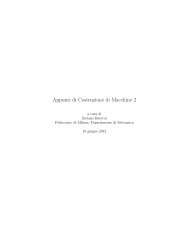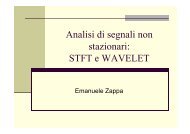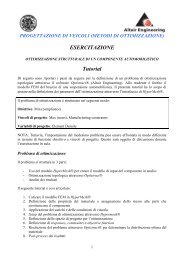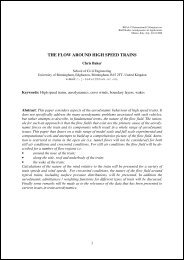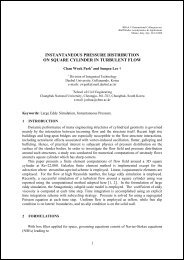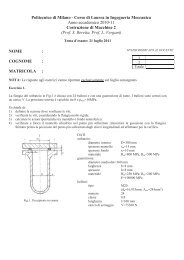Summary 2. The electromechanical energy conversion
Summary 2. The electromechanical energy conversion
Summary 2. The electromechanical energy conversion
You also want an ePaper? Increase the reach of your titles
YUMPU automatically turns print PDFs into web optimized ePapers that Google loves.
Will be stable if an increase of speed is a deficiency of torque so the machine slows down;<br />
conversely, a decrease of speed must be matched by a surplus of torque so the machine<br />
accelerates.<br />
Knowledge of the mechanical behavior of the load is a fundamental starting point for the drive<br />
design and for the choice of the machine to be used.<br />
By studying the behavior of the mechanical load, you can in fact identify the needs in terms of<br />
torque, starting from the time profile of the required speed. You may also obtain the points of<br />
maximum acceleration and deceleration, that are the points of maximum torque for the electric<br />
machine.<br />
<strong>2.</strong>1.2 Reluctance torque and excitation torque<br />
In this section we want to highlight the different contributions to the birth of electro-mechanical<br />
action.<br />
Basically there are two different cases:<br />
• torque resulting from the magnetic structure of the circuit, that is caused by anisotropy<br />
• resulting from the interaction between two magnetic coils.<br />
Consider the first case, referring to Figure 2-2, where you can highlight a magnetic structure<br />
made by a fixed part on which is mounted a winding and a rotating part.<br />
θ<br />
v<br />
i<br />
Figure 2-2: reluctance torque in a primitive machine<br />
From an electrical point of view, the system can be represented by a one-port as a series of a<br />
variable resistor with an inductance. Thus we have:<br />
d<br />
di dL<br />
v = Ri + ( Li)<br />
= Ri + L + i<br />
dt<br />
dt dt<br />
Multiplying both sides by he current "i", we obtain the equation expressing the <strong>energy</strong> balance:<br />
2 di 2 dL<br />
vi = Ri + iL + i<br />
dt dt<br />
Recalling that the instantaneous power absorbed by the magnetic field can be obtained by<br />
differentiating the <strong>energy</strong> expression, it results:<br />
dW d ⎛ 1 2 ⎞ di 1 2 dL<br />
pµ<br />
= = ⎜ Li ⎟ = Li + i<br />
dt dt ⎝ 2 ⎠ dt 2 dt<br />
3


